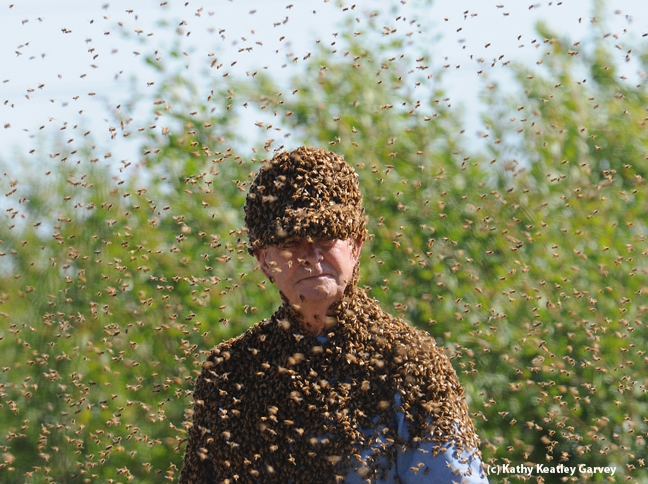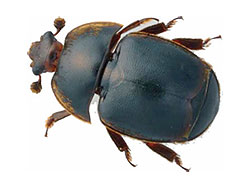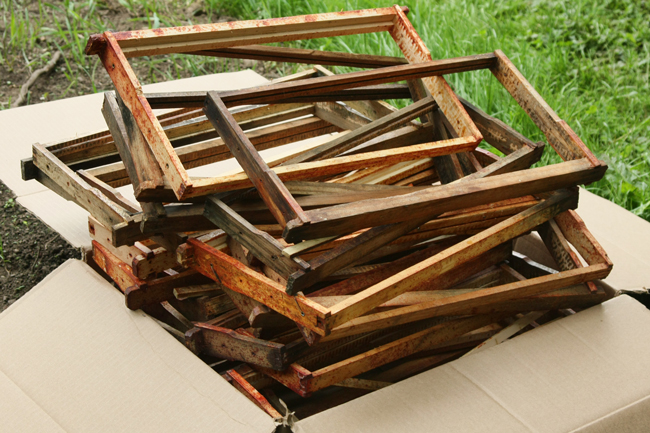
Introduction
Ah, the autumn. Cooling temperatures, changing leaves, and thousands of honey bees desperately searching for every last bit of food. Honey bees, like their mammal counterparts, spend spring, summer and fall gathering and storing incredible amounts of food to get through the winter. Until the temperature drops around 60 degrees Farenheit, and as long as food is available, the bees are feasting and stashing. As winter approaches, the needs of the honey bee changes. Our beekeeping responsibilities change along with them. Fall checks, then, are particularly critical to a hive’s viability, and helps the Beekeeper stay in touch with its health and needs.
Focus on Food
It is a surreal experience, at least the first time you do it, to purposefully move through a cloud of bees. While there is some manual cleaning involved in beekeeping, a great deal is done by the bees themselves. These magnificently resourceful creatures have no problem finding every last speck of honey, propolis to bring back home. And so, when carrying a box with their dearest treasures from the bee yard to a spot more than 100 feet away, you will inevitably surround yourself in a swarming cloud of bees within minutes. Here, it is important to move slowly and deliberately, and to be calm, remembering that their sole concern at this point is to find resources.
Because resources are so scarce, if you are going into several hives at once, it is vitally important to lay temporary lids over each box you have opened. Your bees will be out searching for any scrap of available food. If a hive is wide open, these desperate bees will absolutely go into neighboring hives, and rob them. Robbers are scouts who have found a vulnerable hive, so these initial robbers will actually go back home and tell their friends to come follow. So now what you have is potentially thousands of bees invading and fighting to the death to get precious resources to survive the winter. Have you ever seen a bee fight? It is no-holds-barred. They spin in circles, biting one another’s wings and drag each other around. This is not the environment you want to create for your bees. Or for yourself. But again, this is fairly easy to prevent by working quickly to cover each box with temporary roofing as you work your way through.
Entrance Consideration
When we’re not tampering with their roofing and just leave them alone, bees are pretty good at protecting their resources. Like in a medieval castle (or airport transit security) bees have appointed guards at their single entrance. These guards stand by the entrance at attention, on their back four legs. Using their front two legs, guard bees thoroughly search each and every creature that attempts to enter their hive. If they don’t fit the entrance requirements (you really just have to be a honeybee that has that particular hive-queen’s pheromone), guard bees muscle up and bounce the door.
A good rule of thumb (for any time of year) is that entrances should fit the size of your colony and in the fall and winter no more than two bees at one time. This way, the hives only have to dedicate maybe two or three guard bees at once. Having fewer personnel on guard duty means more workers are free to nurse brood, attend to the queen, build comb, forage and then process nectar and pollen.
Pest Control
Unfortunately, guard bees can’t prevent all pests. Two huge problem areas are small hive beetles and varroa mites. Honey bees, when they see a hive beetle, will actually attempt to chase them off (which is surprisingly cute) but due to their flying saucer shape they often times cannot get a firm hold and they slip away. Queen City Bee Co. utilizes beetle blasters, containing a mixture of oil and water, in all of our hives. Beetles see the traps as a hiding place when running from the bees and meet their demise. Or else we crush them on sight. Both are effective strategies!
Taking only one to two weeks to mature, these little pests can infest colonies to the point that they drive the bees to abscond (to fly away and find a new home). Hive beetle larvae emerge from an egg, eating through comb, pollen and honey collected and processed by the bees. Eventually crawling out the hive entrance, the grubs burrow into the ground where they metamorphosize into a small beetle. If they successfully re-enter the hive, each female beetles can lay up to 1000 eggs in a 50-60 day life span. This last point is extra gross because their grubs can slime comb and ferment honey. I would abscond at that point, too.
Varroa mites are kind of horrific. I’ll keep it brief: the tiny varroa mite with lays its eggs in with the bee’s brood (eggs and larvae). The mite’s 10 day lifecycle inclines it to lay their eggs in with drone brood. Male bee’s long 24 day metamorphosis means that mites can lay an extra generations in each drone brood cell. As the bee larvae develop, the varroa mite feast on their hemolymph. From there, they keep up their same dracula-ness, coming out of brood cells as the bees cut themselves out of the wax, and live off of the bee’s hemolymph. Katie Valentine, Deputy Climate Editor at ThinkProgress and freelancer for the Audubon Society, said that at a human scale, it would be like “mites the size of grapefruits attaching themselves people and sucking their blood.”
Queen City Bee Co. combats these tiny parasites using Apivar strips. According to their website, when the varroa mite comes into contact with Apivar’s active ingredient, “it leads to constant excitation and paralysis, followed by mite drop from the bee’s back.” (Sounds like a fun Saturday night!) Though the bees can sometimes throw the mites out themselves. Each bite leaves a wound. We humans have the ability to disinfect and cover scratches and accidental openings of our skin, but bees are more vulnerable, leaving their wounds are open to disease and infection.

Brood Pattern
One possible explanation as to why the varroa mite evolved to lay their eggs in with the queen’s brood comes down to the first rule of real estate: location, location, location. Bees brilliantly save the very middle of their hive for their queen and her babies. Protected from predators and the elements, insulated by pollen and honey, each new generation is laid with care by the queen. Beekeepers luckily have the ability to pull out comb frame by frame in order to inspect. Here’s what we’re looking for, in the words of Dr. Dewey M. Caron, author of Honey Bee Biology and Beekeeping:
Skillful beekeepers look to see a ratio of 1:2:4 in the brood chamber (for every egg, 2 larvae can be seen and 4 times the number of capped cells will be present) and a covering mantle of adult bees. (LINK)
There are several possible explanations for poor laying patterns. Maybe there’s not enough population to feed the brood and keep them warm, or maybe there’s not enough nectar nearby. It could also just be the time of year; with its shortening days and cooler temperatures, there will simply be less brood in the fall. If a queen’s brood pattern is spotty, there are there are a couple of things you can do. If you are lucky enough to have a neighboring hive that is producing more brood than necessary, you can pull a frame or two of brood, and introduce them into the hive that is struggling. I was skeptical of this at first, but it turns out brood from a separate hive integrates immediately and seamlessly with their new family. This could also be a great time to introduce a new queen.
Frame, Frame, Frames
While you are examining the brood frames, taking out honey, and generally being way too involved for bees to feel particularly friendly, go ahead and see how old your frames are. Sometimes the bees build out a bit far on the comb, making the frame slightly less manageable. Or maybe you are experimenting with new techniques. For instance, Queen City Bee Co., when they first started, used fishing line to support the various foundations. Bees ate right through the fishing line, and seemed to prefer wax over plastic foundation. Learn and get involved with the bees, the frames can also go through a bit of wear and tear. Changing out frames means that we can harvest old wax, implement new methods, and make sure our equipment (and their home, remember, they are living creatures) are up to snuff. The Queen City Bee Co. dates each frame with the year it went into use, and as a general rule, switches them out every three years.

Feeding
One lovely (and pretty obvious) thing about being alive is eating. When the autumn begins to dawn here in Ohio, there is less nectar for the bees to collect, blow bubbles into, and set aside to evaporate into honey. So we feed them.
Alongside their number one, honey, bee’s second favorite snack is also available in coffeeshops alongside various creams and sweeteners: Simple syrup! In the fall and winter, we simply mix two parts cane sugar to one part water, and then heat until the sugar is completely dissolved. If you’re trying this at home, you can even mix in some chamomile, lemon balm, lemongrass, and spearmint. Or you can just drink that yourself because it is delicious, and bask in the knowledge that you and bees have the same excellent taste.
Conclusion
We have to go through fall checks to match the number of frames to each population and update our pest management. As we do so, it is vitally important to cover open boxes and reduce entrance sizes. These practices leave bees less prone to robbers, and less susceptible to pests. The world of the honey bee is filled with the drama of survivalism throughout the seasons. But if we can give peace a chance in a time of scarcity, then I say let’s go for
